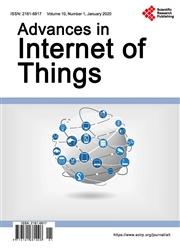Design and Simulation of IoT Systems Using the Cisco Packet Tracer
引用次数: 6
Abstract
Design and implementation of Internet of Things (IoT) systems require platforms with smart things and components. Two dominant architectural approaches for developing IoT systems are mashup-based and model-based approaches. Mashup approaches use existing services and are mainly suitable for less critical, personalized applications. Web development tools are widely used in mashup approaches. Model-based techniques describe a system on a higher level of abstraction, resulting in very expressive modelling of systems. The article uses Cisco packet tracer 7.2 version, which consists of four subcategories of smart things—home, smart city, industrial and power grid, to design an IoT based control system for a fertilizer manufacturing plant. The packet tracer also consists of boards—microcontrollers (MCU-PT), and single boarded computers (SBC-PT), as well as actuators and sensors. The model facilitates flexible communication opportunities among things—machines, databases, and Human Machine Interfaces (HMIs). Implementation of the IoT system brings finer process control as the operating conditions are monitored online and are broadcasted to all stakeholders in real-time for quicker action on deviations. The model developed focuses on three process plants; steam raising, nitric acid, and ammonium nitrate plants. Key process parameters are saturated steam temperature, fuel flowrates, CO and SOx emissions, converter head temperature, NOx emissions, neutralisation temperature, solution temperature, and evaporator steam pressure. The parameters need to be monitored in order to ensure quality, safety, and efficiency. Through the Cisco packet tracer platform, a use case, physical layout, network layout, IoT layout, configuration, and simulation interface were developed.使用Cisco数据包跟踪器的物联网系统的设计和仿真
物联网(IoT)系统的设计和实现需要具有智能事物和组件的平台。开发物联网系统的两种主要体系结构方法是基于mashup和基于模型的方法。Mashup方法使用现有服务,主要适用于不太关键的个性化应用程序。Web开发工具广泛用于mashup方法。基于模型的技术在更高的抽象级别上描述系统,从而产生非常有表现力的系统建模。本文使用思科数据包跟踪器7.2版本,该版本由四个子类别的智能事物组成——家庭、智能城市、工业和电网,为化肥制造厂设计了一个基于物联网的控制系统。数据包跟踪器还包括板——微控制器(MCU-PT)、单板计算机(SBC-PT),以及执行器和传感器。该模型促进了机器、数据库和人机接口(HMI)之间灵活的通信机会。物联网系统的实施带来了更精细的过程控制,因为操作条件是在线监测的,并实时广播给所有利益相关者,以便更快地对偏差采取行动。开发的模型侧重于三个加工厂;蒸汽饲养、硝酸和硝酸铵植物。关键工艺参数包括饱和蒸汽温度、燃料流速、CO和SOx排放量、转化器头温度、NOx排放量、中和温度、溶液温度和蒸发器蒸汽压力。需要对参数进行监控,以确保质量、安全和效率。通过Cisco数据包跟踪器平台,开发了用例、物理布局、网络布局、物联网布局、配置和模拟接口。
本文章由计算机程序翻译,如有差异,请以英文原文为准。
求助全文
约1分钟内获得全文
求助全文

 求助内容:
求助内容: 应助结果提醒方式:
应助结果提醒方式:


